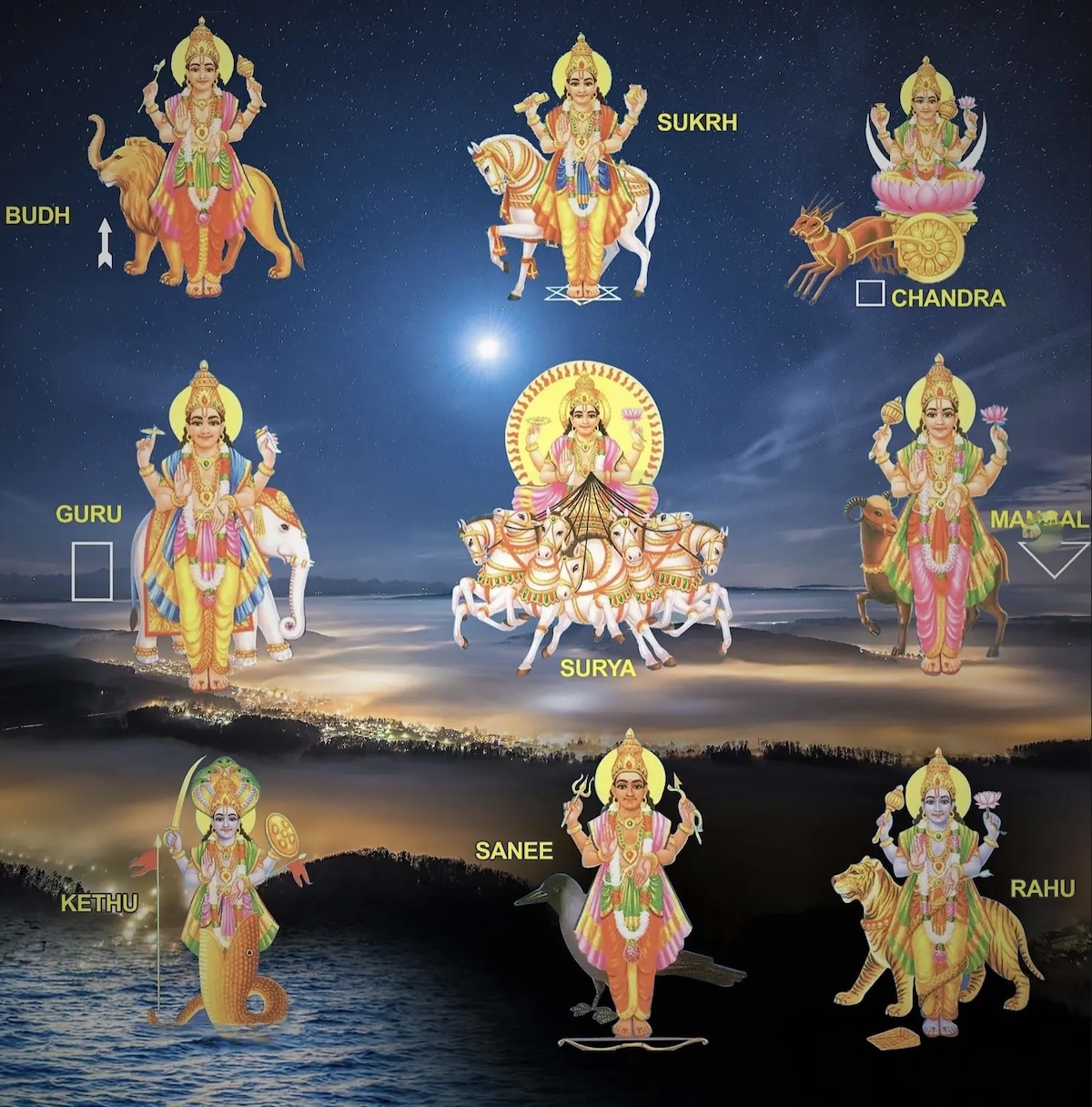ग्रह (Graha) - Planet

Etymology and Sanskrit Roots
The term "Graha" has its origin in Sanskrit. The root of the word "grah" in Sanskrit means "to seize", "to grasp", or "to take hold of". This root concept is fundamental to understanding the various meanings of "Graha" in different contexts.
Literal Meaning
In its most basic sense, "Graha" refers to the act of seizing or holding. This literal meaning is extended in different philosophical and astrological interpretations.
Linguistic Evolution
Over time, the term has been used in various compound words and phrases in Sanskrit literature, evolving to carry more specialized meanings in the fields of astrology, philosophy, and mythology.
Jyotish (Vedic Astrology)
In the realm of Jyotish, or Vedic Astrology, "Graha" plays a central and complex role. The planets grasp and relay the information of the cosmos. It shows the grasp or hold of karma too.
Planetary Bodies
- Visible Planets: "Graha" encompasses the five visible planets in our solar system - Mercury (Budha), Venus (Shukra), Mars (Mangala), Jupiter (Guru or Brihaspati), and Saturn (Shani). Each of these planets is believed to have distinct characteristics and influences on human affairs.
- Luminaries: The Sun (Surya) and the Moon (Chandra) are also considered "Grahas". The Sun represents the soul, ego, and vitality, while the Moon is associated with the mind, emotions, and subconscious.
- Shadow Planets: Additionally, two non - physical points in the sky, Rahu and Ketu, are classified as "Grahas". Rahu is the north node of the Moon and is linked to desires, obsessions, and sudden changes. Ketu, the south node, is associated with spirituality, detachment, and karmic release.
Astrological Influence
- Natal Charts: The positions of the "Grahas" at the time of a person's birth are analyzed in a natal chart (Janma Kundali). The relationships between different "Grahas", such as their conjunctions, aspects, and placements in various houses, are used to predict a person's personality traits, life events, and destiny.
- Transits: The movement of the "Grahas" through the zodiac signs (Rashis) and their transits over different houses in a natal chart are also studied. Transits can trigger significant events and changes in a person's life, depending on the nature of the "Graha" and the house it transits.
Philosophy
In Indian philosophy, "Graha" has a profound and symbolic meaning that goes beyond its astrological usage.
Sense Organs and Perception
- Seizing of Sensory Objects: "Graha" can be interpreted as the sense organs' act of seizing or grasping sensory objects. For example, the eye "grasps" visual forms, the ear "grasps" sounds, and so on. This concept is central to understanding how we perceive the external world.
- Role in Cognition: The interaction between the "Grahas" (sense organs) and the objects of perception is considered a crucial step in the process of cognition. However, in many philosophical traditions, this interaction can also lead to attachment and suffering.
Spiritual Implications
- Liberation from Grasping: In the context of spiritual liberation (Moksha), the idea of "Graha" is related to the need to free oneself from the constant "grasping" of the senses and the mind. By transcending the attachment to sensory experiences and worldly desires, one can achieve a state of inner peace and spiritual enlightenment.
- Karma and Rebirth: The actions and attachments associated with the "Grahas" are also linked to the law of karma. The way we interact with the world through our senses can create karmic imprints that determine our future rebirths and experiences.